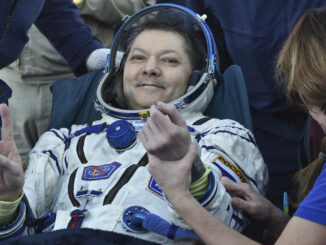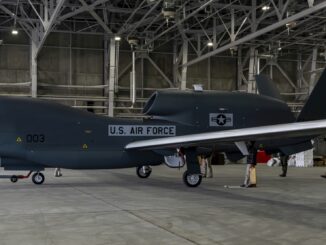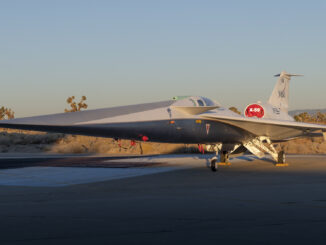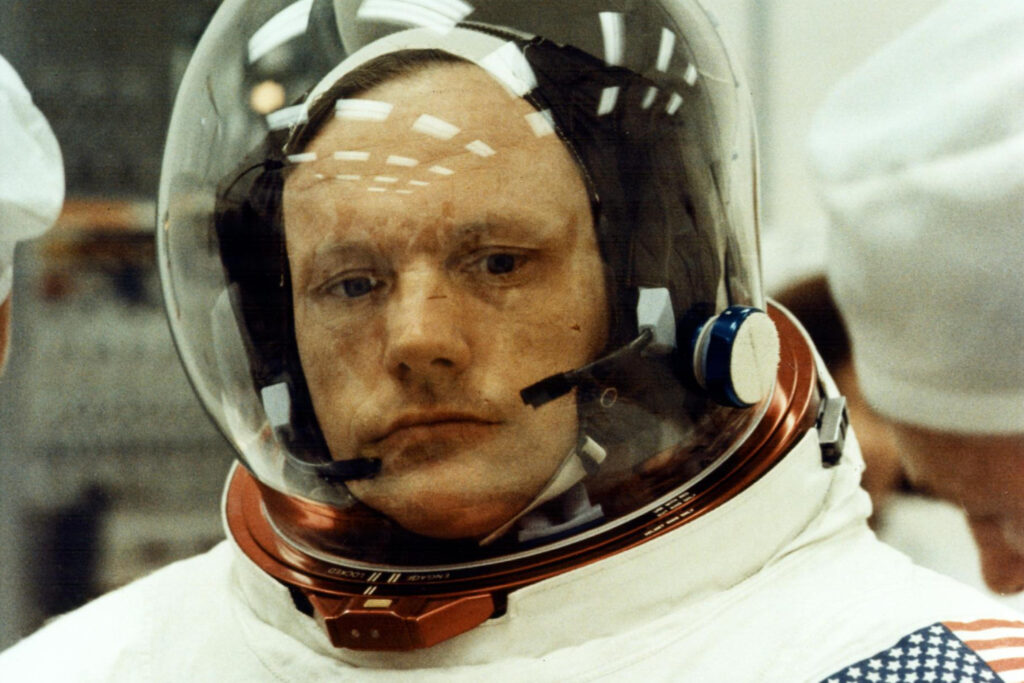 Neil Armstrong, an American military pilot and cosmonaut, as well as the first man to step on the Moon, was born on 5th August 1930, in Wapakoneta, Ohio.
Neil Armstrong, an American military pilot and cosmonaut, as well as the first man to step on the Moon, was born on 5th August 1930, in Wapakoneta, Ohio.
In 1932, shortly after Armstrong’s second birthday, his father took him to the National Air Races in Cleveland. That event planted the seed of passion for aviation in the soul of the future astronaut. At the age of six, Armstrong took his first ever flight in an aeroplane, a Ford Tri-Motor in Warren, which only deepened his interest in aeronautics.
Already at the age of fifteen, at an airport near Wapakoneta, young Neil Armstrong started learning to fly. Only a year later he officially became a pilot, obtaining pilot’s license.
In 1949, he was called up to serve as a pilot in the Navy. Soon after, Neil Armstrong was deployed to Korea, where he carried out 78 combat sorties from the deck of USS Essex aircraft carrier.
In 1952, the war was almost over, and Armstrong finished his service in naval aviation. He completed the bachelor studies at Purdue University and then he joined the National Advisory Committee for Aeronautics (NACA). In the mid-1950s, Armstrong was assigned to NASA Flight Research Center in Edwards, California and became a test pilot there. He also continued his graduate studies at the University of Southern California, completing them with a master of science degree in aerospace engineering.
In 1962, Neil Armstrong, was selected a candidate for astronaut and joined the NASA Astronaut Corps in El Lago, Texas. On 16th March 1966, he launched into space as command pilot of the Gemini 8 mission, with astronaut David Scott as pilot. The objective of that mission was the first ever docking to an unmanned target spacecraft Agena, in Earth orbit.
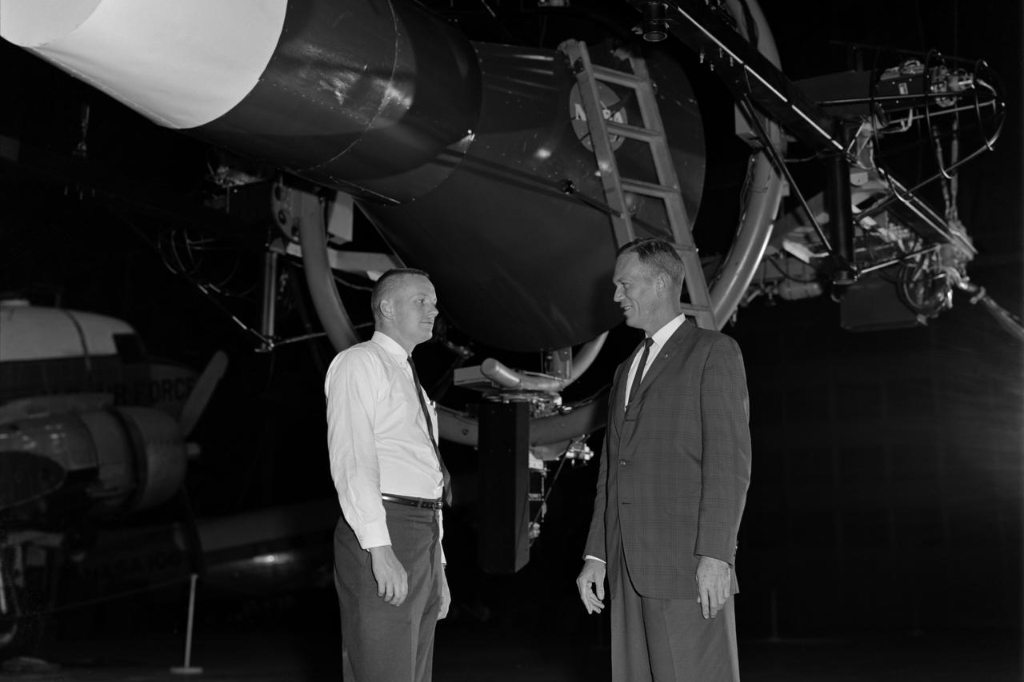
Three years later, the most remarkable episode in Armstrong’s space career took place. On 16th July 1969, mission Apollo 11 began, with Neil Armstrong as the commander, Michael Collins, the command module pilot, and Edwin E. ´Buzz´ Aldrin, the lander pilot.
The crew of the Apollo 11 mission landed on the surface of the ‘silver globe’ at 20:17 UTC, on 20th July 1969. Few hours later – and already on 21st July at 2:56 UTC – Neil Alden Armstrong became the first man in history to set foot on the Moon, uttering the famous words: ‘That’s one small step for a man, one giant leap for mankind’.
On 24th of July, at 16:50 UTC, Armstrong, Aldrin and Collins returned to Earth, splashing down safely in the waters of the Pacific Ocean, from which they were soon picked up by the crew of the USS Hornet aircraft carrier.
After travelling to the Moon, Armstrong was for a short time appointed Deputy Associate Administrator for Aeronautics at NASA and was responsible for managing and coordinating all of the agency’s projects in the field of aeronautics.
In 1971, Armstrong left NASA and later that year became professor of aerospace engineering at the University of Cincinnati, where he worked until 1979. From 1982 to 1992, Neil Armstrong was chairman at Computing Technologies for Aviation, Inc. of Charlottesville, Virginia and then chairman of the board at AIL Systems, Inc. of Deer Park, New York. During his later years lived on his farm in Lebanon, Ohio.
The first man on the Moon died on 25th August 2012, aged 82.
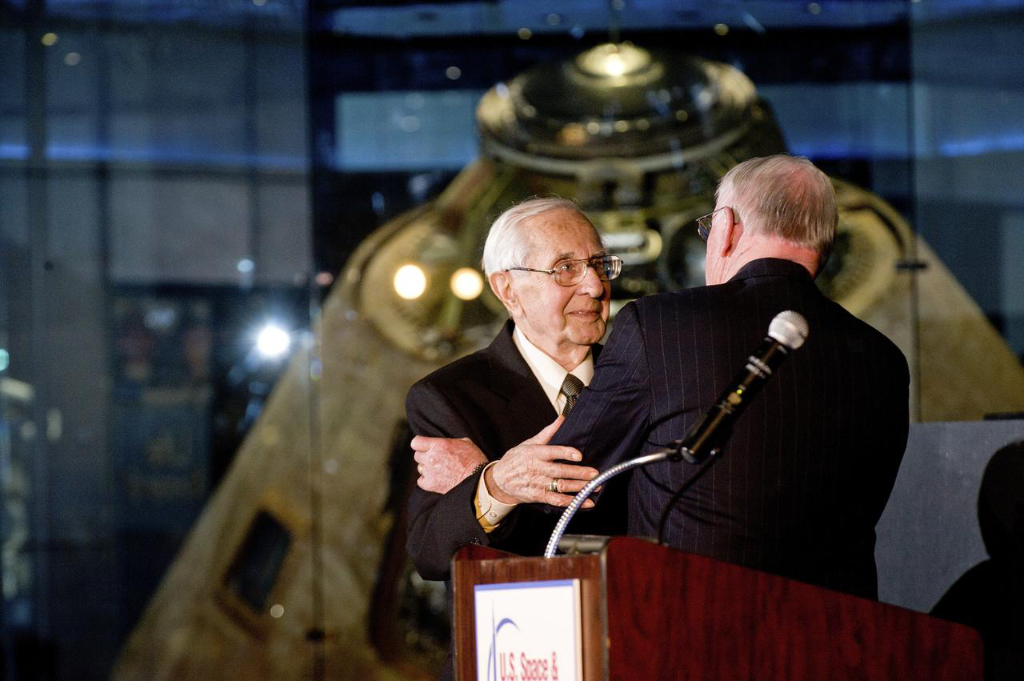
Cover photo: Technicians make the final adjustments to Apollo 11 Commander Neil A. Armstrong’s spacesuit as he prepares to take part in a space vehicle Countdown Demonstration Test, 1969 (photo: NASA, KSC-69PC-347)
All photos © National Aeronautics and Space Administration. Information from NASA press releases were used.

